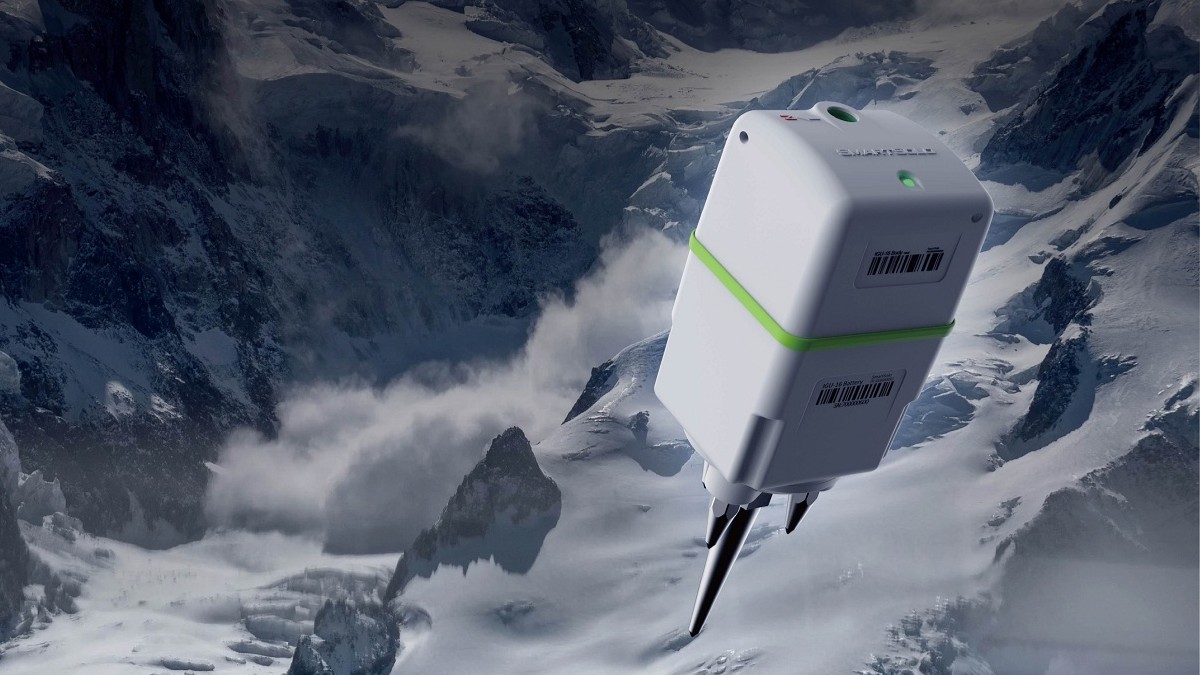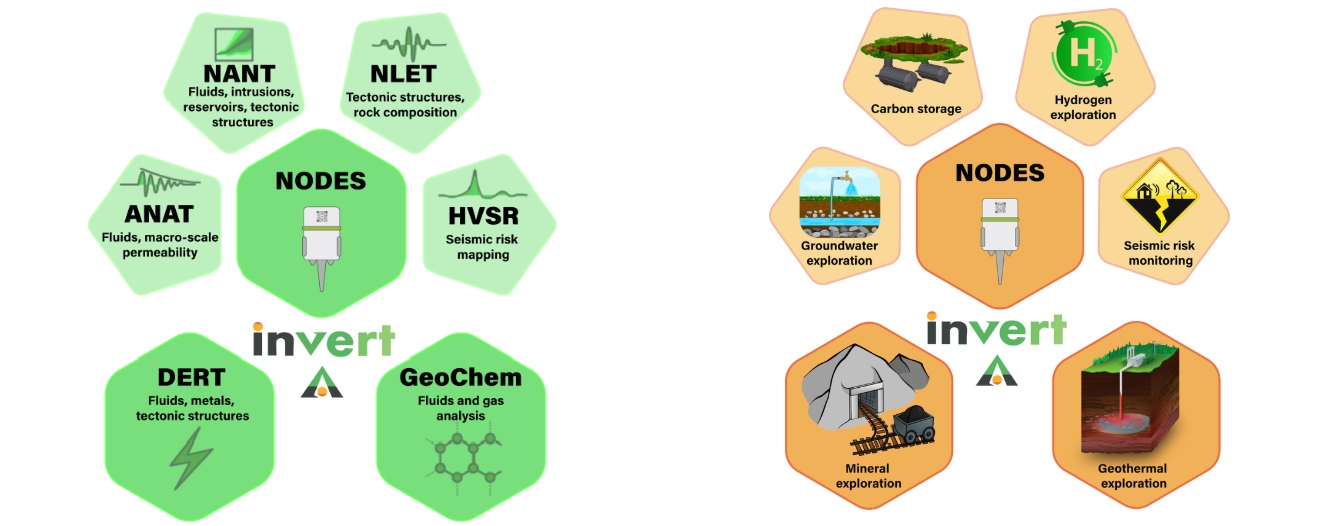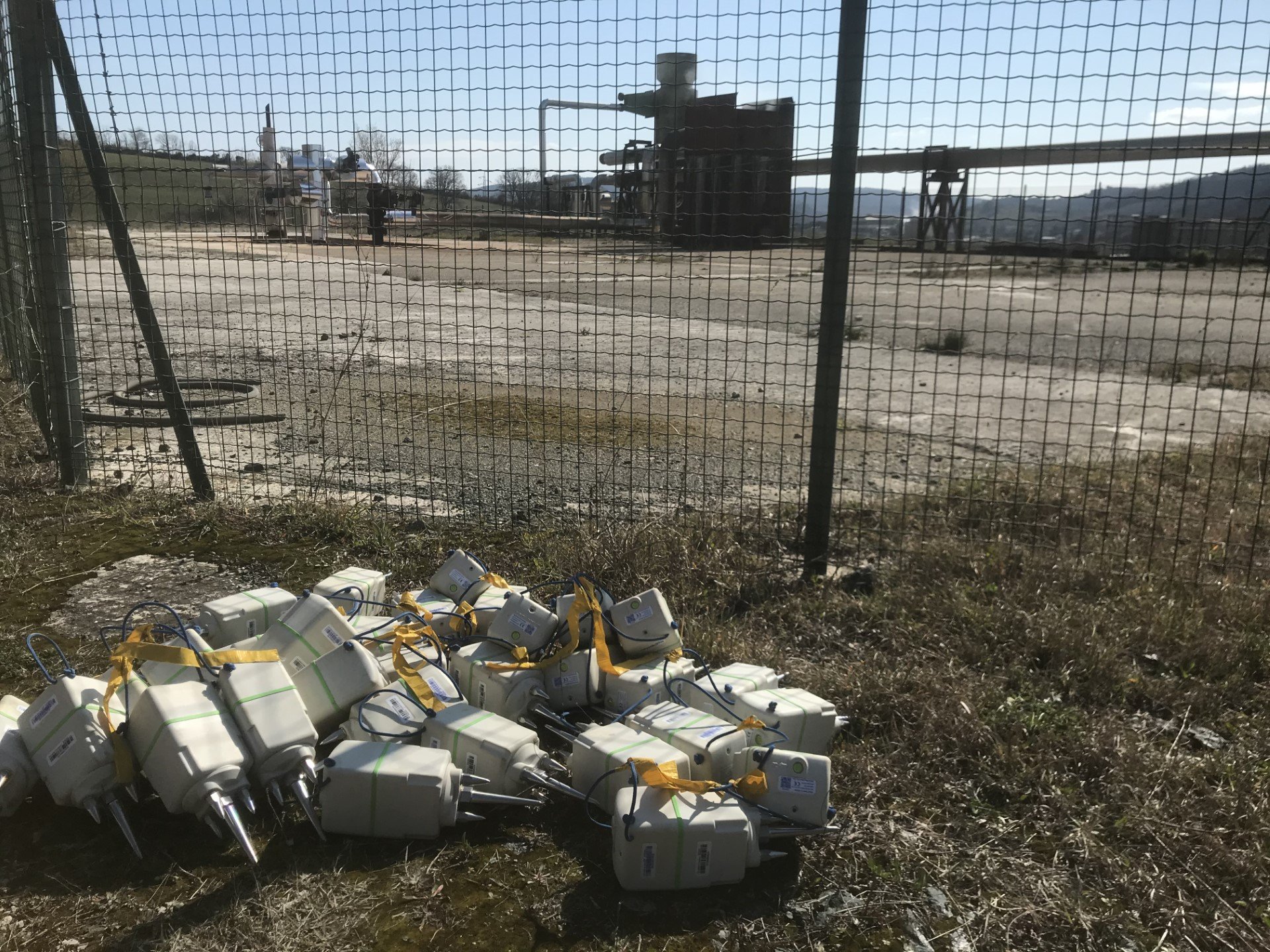Introduction
With growing global demand for clean and sustainable energy, geothermal energy is emerging as a key player in the transition to a more sustainable future. Traditional geothermal exploration methods have faced challenges including high costs, logistical complexities, and limited subsurface imaging capabilities. SmartSolo nodal seismometers offer a powerful and efficient solution, transforming how we unlock the Earth’s geothermal potential.

Challenges in Traditional Geothermal Exploration
Traditional seismic exploration methods, relying on cabled geophones and active seismic sources like vibroseis trucks or explosives, often face several obstacles:
High Operational Costs
Operating active seismic sources is expensive and can cause environmental disturbances. Besides, deploying and maintaining cabled geophones are labor-intensive and costly.
Deployment Limitations
Difficult terrains, such as mountains or dense forests, significantly restrict the deployment of cabled seismic systems, limiting the scope and effectiveness of surveys.
Data Quality Concerns
Cabled systems are susceptible to noise interference, compromising data quality, particularly when using ambient seismic noise for exploration.

SmartSolo: A New Era in Geothermal Exploration
SmartSolo nodal seismometers represent a significant advancement in seismic data acquisition, offering key advantages for geothermal exploration:
Wireless and Nodal Design
The cable-free and lightweight design of SmartSolo equipment simplifies deployment and increases flexibility, enabling quick use across various environments. This aligns with Invert-Geoscience’s emphasis on “logistically flexible deployments.”
Optimized for Ambient Noise Tomography
High-sensitivity sensors from SmartSolo are well-suited for use in Nodal Ambient Noise Tomography (NANT). NANT uses naturally occurring seismic noise, eliminating the need for artificial sources that are costly and potentially environmentally disruptive. This ‘non-invasive’ approach supports sustainable exploration and minimizes environmental impact.
High-Density Nodal Arrays
SmartSolo enables dense networks of hundreds of wireless seismometers. These arrays capture comprehensive subsurface information, improving imaging resolution. Dense nodal arrays are crucial to achieve the 3D high-resolution model and deep penetration needed for characterizing geothermal reservoirs (fractures, geological structures, and deep reservoirs).
Deep Exploration Capabilities
By using high-quality data from SmartSolo alongside advanced tomographic methods like NANT and NLET, exploration up to 5 km deep becomes possible. This approach helps in understanding geological structures that are important for geothermal resources.
Cost-Effectiveness
Using SmartSolo nodal seismometers significantly reduces the cost of seismic exploration by replacing artificial active sources, and simplifying deployment and maintenance. This technological advance expands the feasibility of geothermal projects, making them more attractive for investment.

Synergy with Invert-Geoscience’s Geophysical Methods
Invert-Geoscience, an advanced geophysical service provider, utilizes innovative techniques like NANT and DERT, showcasing synergy with SmartSolo technology.
NANT (Nodal Ambient Noise Tomography)
Invert-Geoscience’s NANT method uses ambient seismic noise to generate high-resolution 3D subsurface images. SmartSolo sensors capture the weak ambient seismic signals required for NANT, enabling deep penetration (up to 5 km) and reservoir characterization.
DERT (Deep Electrical Resistivity Tomography)
DERT complements NANT by offering crucial information about the electrical resistivity structure of the subsurface. This helps identify the features like clay caps and fracture zones, crucial for understanding geothermal systems. The combination, facilitated by SmartSolo, offers a powerful approach integrating seismic and electrical methods.
ANAT (Ambient Nodal Attenuation Tomography)
Invert-Geoscience also utilizes ANAT and NLET methods, further enhancing its geophysical capabilities with SmartSolo. ANAT integrates with NANT for 3D attenuation models. It identifies the presence of fluids and fractured regions, supporting deep exploration (up to 5 km) to locate potential geothermal systems.
NLET (Nodal Local Earthquake Tomography)
NLET uses dense networks for earthquake detection, even in quiet areas. It uses passive seismic body waves from earthquakes to create subsurface 3D images, interpreted for structures and rock composition.

Real-World Impact: Case Studies and Applications
Geothermal Exploration in Volcanic Regions
Volcanic regions, characterized by complex geology and challenging terrain, are ideal locations for geothermal energy. SmartSolo instruments, with their ability to be deployed in difficult environments and high-resolution imaging capabilities, are particularly well-suited for these areas. This technology proves highly effective in volcanic settings.
Enhanced Geothermal Systems (EGS)
The Enhanced Geothermal Systems (EGS) projects seek to harness the heat from hot and dry rocks deep beneath the surface. These projects require precise imaging of subsurface fractures to simulate fluid flow. SmartSolo, combining with advanced tomographic techniques, provides the detailed information needed to optimize EGS development.
Beyond Geothermal: Expanding Applications
- Oil and Gas Exploration: Imaging structures for hydrocarbon identification.
- Mineral Exploration: Detecting and characterizing mineral deposits.
- Engineering Seismology: Assessing subsurface conditions for infrastructure.
- Earthquake Monitoring: Studying seismic activity and contributing to early warning.
- Structural Health Monitoring: Assessing the health of critical infrastructure by detecting subtle seismic changes.
The Future of Geothermal Exploration with SmartSolo
Integration with Machine Learning
The massive datasets generated by SmartSolo nodes are ideally suitable for analysis using machine learning algorithms. Machine learning can identify subtle patterns and anomalies in seismic data, thereby improving reservoir characterization and resource assessment.
Real-Time Monitoring
The wireless capabilities of SmartSolo instruments facilitate real-time data streaming and analysis, significantly enhancing continuous monitoring of geothermal reservoirs. This enhanced monitoring provides valuable insights into reservoir dynamics and facilitates production optimization.
Miniaturization and Cost Reduction
Continued advancements in sensor technology are driving the development of even smaller and more cost-effective nodal seismometers. This will further reduce the cost of geothermal exploration, making it accessible to small-scale geothermal projects and research initiatives.

Conclusion
SmartSolo nodal seismometers are transformative, reshaping the landscape of geophysical exploration. Their efficiency, cost-effectiveness, and high-resolution imaging are invaluable for unlocking geothermal potential, contributing to a sustainable energy future. The integration of SmartSolo with methods like NANT and DERT exemplifies the power of collaboration in geosciences. The technology’s expanding applications and continued development suggest an even greater transformative impact on geothermal energy and broader resource exploration in the future.
